The Latest from TechCrunch |  |
- Weebly Launches Free WYSIWYG Virtual Storefronts
- Siri: The Virtual Assistant That Will Make Everyone Love The iPhone Even More
- Another $10.5M Unloads on Peer39’s Dock
- LG Launches DTXTR Tool To Help Parents Understand What Their Kids Are TXTING
- Good Technology Buys Social Communication Enabler Intercasting
- Time-Waster Alert: MusicShake Widgetizes Its Soundmixing Service
- Live Video From Stockholm: TechCrunch Europe Roundtable
- Time Warner To Decide On AOL Spinoff At Thursday Board Meeting (It’s A Done Deal, Supposedly)
- Zensify iPhone app shows key trends across your social graph
- Adify Opens Up API To Expand Technology For Ad Networks
- Exclusive Video: Mark Zuckerberg And Yuri Milner Talk About Facebook’s New Investment
- Multiply 4.0: Social Network Photo Sharing Done Right
- Topsy Search Launches: ReTweets Are The New Currency Of The Web
- Warning: Twittercut Worm Plays On Your Desire For More Followers
- Need A Witty “App For That” Phrase? There’s An App For That.
- Contenture Launches. Micropayment-Based Freemium Models For All. (If People Use It.)
- OurParents Launches Free Customized Service To Find Senior Care Providers
- Feel The DailyBurn: Gyminee Gets A New Name, Raises $525K
- Political Pundit Tucker Carlson To Launch Competitor To Huffington Post
- It May Not Be Making A TV Show, But Twitter Sure Has A Lot Of Reruns
- The Awesome Potential Of Retweet
- Microsoft’s Bing Logo Leaked By Way Of Favicon?
- Now You Can Avoid Euro Disney In Google Earth, Just Like You Did In Real Earth
- Taking Yahoo Meme For A Spin: It’s A Mediocre Tumblr Clone
- Live Blogging The Facebook Conference Call
| Weebly Launches Free WYSIWYG Virtual Storefronts Posted: 27 May 2009 08:59 AM PDT Weebly, a popular WYSIWYG webpage maker, is launching a new feature today that will allow users to quickly make fully customized web stores using the Weebly interface they’re already familiar with. Using the new feature is simple. Weebly has added a handful of new ‘revenue’ elements to its main menubar, which allows you to drag-and-drop items onto your page. Simply drag one of the four available ‘Product’ elements onto your page, and you’ll be presented with a small box where you can describe your product, add a photo, and set a price (you can easily create a new item in less than a minute). After creating a product once, you can add it to your other pages without having to recreate it. The store supports both PayPal and Google Checkout accounts, and allows users to add items to a virtual shopping cart as they browse (you don’t have to buy one item at a time). And aside from any fees you might have from PayPal or Google, the Weebly storefront is totally free - the company isn’t taking a cut of any of your sales. To make money, Weebly plans to offer ‘pro’ features for power users at a premium in the future (the site also generates revenue through its pro accounts and domain selling). There are already quite a few services online that allow you to generate your own virtual marketplace, but Weebly cofounder David Rusenko says that most of these do a poor job allowing you to customize the look and feel of your store, which often leads to something generic. Because Weebly can already be used to build your own fully customized webpage, adding the ability to sell items seemed like a natural extension to the product (especially since many users were already trying to sell items from their Weebly pages on their own). At this point my only complaint about the Weebly store is that it doesn’t yet offer templates, though Rusenko says they’re on the way. This means that whenever you create a page for an item, you’re going to have to re-drag all of the links to your other items back to the bottom of the page. This may allow for a wide degree of flexibility, but I think it will also lead to inconsistency on some stores, as some designers forget to add links to their other products (or they get lazy). Rusenko ackowledges that this could get frustrating, but says that the Weebly storefront is really meant for people with small inventories, so this shouldnt be as much of a hassle as it would be for major retailers. Beyond the new storefront functionality, Weebly is doing quite well. The site has almost 2 million registered sites (and is growing steadily, see graph below). 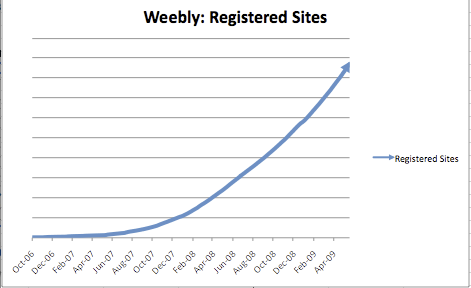 Crunch Network: CrunchBoard because it’s time for you to find a new Job2.0 |
| Siri: The Virtual Assistant That Will Make Everyone Love The iPhone Even More Posted: 27 May 2009 08:51 AM PDT
Editor’s note: The following guest post was written by Nova Spivack, CEO of of Radar Networks, the company behind Twine A new paradigm for using the Internet is about to begin: Virtual Assistants (VA's) are coming to a mobile device near you. This week, a stealth startup will demonstrate the first public version of their mobile virtual assistant, Siri. This may mark the beginning of the era of consumer-grade virtual assistants on the Web. Siri is focused on mobile devices – particularly the iPhone and other smart phones, it has an unusually productive interface and user experience, and it is super useful – it is something I would really use every day. As a result I would not be surprised if Siri becomes one of the top iPhone applications within a few months after their launch. The team at Siri has given me a sneak-preview of their technology and product, and here I will dive deep to try to uncover the real significance and technical underpinnings of what they are doing. In addition, I'll delve into the implications of the virtual assistant (VA) trend and what it might mean for us in the future. This is a two-part article. In Part One, here, I cover the basics of Siri as a product, and the Virtual Assistant paradigm compared to search. In Part Two I will go more deeply into the technological foundations and questions. First Look at Siri, the Product Siri is a virtual assistant that is focused on helping consumers complete tasks in their online lives, particularly in the mobile context. The version I looked at runs on the iPhone. Typical use cases are booking dinner reservations, buying movie tickets, getting local information, or finding things to do in your local area. Siri is integrated with the APIs of a "couple of dozen familiar big brand" partners, according to Siri CTO, Tom Gruber, and part of their core technology involves being able to orchestrate and complete tasks across multiple services at once for users. On the iPhone you simply launch Siri and then proceed to interact using a familiar "chat" interface. You make requests or state goals to Siri, and then Siri comes back with answers, questions or suggested actions. You can type to Siri in natural language and it does a pretty solid job of parsing your requests. But more impressive is that you can simply push the talk button on your phone and speak to Siri and it understands you. No need to type. It works surprisingly well. I also like the visual interface – Siri illustrates the progress of each dialogue with nicely illustrated cartoon speech balloons. It's super easy to follow the conversation. It's worth noting here that a speech interface to a Virtual Assistant on mobile phones could probably save lives if drivers used it instead of texting (recent research has found that 1 in 4 USA drivers admit to texting while they drive). Siri is not the only company to offer a push-to-talk speech interface on the iPhone – Google provides one too. But what makes Siri unique is that this takes place within a dialogue, a conversation with your virtual assistant. Siri usually responds with an answer or a follow-up question to whatever you start with. Mobile devices provide numerous challenges, as well as useful information, that make them the perfect venue for a virtual assistant. The main challenges of the mobile platform are screen size, input constraints, and bandwidth. Siri has addressed each of these issues. Siri addresses the screen size issue by not forcing users to type lots of text or look at pages and pages of results. Instead, all interactions take place within compact and user-friendly chat balloons. This is a good fit for the small size of mobile screens. Siri makes input easier as well. While you may type if you want to, Siri allows you to simply speak, using your voice, to give it questions or follow-up information. As for bandwidth, Siri conserves it by reducing the need to surf. For example, if you want to book dinner, just tell Siri and it will do it for you, via OpenTable, without you having to surf through the entire OpenTable site to do so. This is a big timesaver. Siri also takes advantage of information from your mobile device about your GPS location and time information about the your present context. These enable Siri to localize information. For example, while you are out and about you can use Siri to discover a great place to eat, get tickets to a show, plan your weekend, or get help finding your way around town. Simply ask Siri, what movies are showing, and it will show you movies that are near your location and that you can still get to. Or ask it about restaurants and it will suggest restaurants you might like near your present location. Beyond simply suggesting things to do, Siri can also do the legwork of making reservations, and orchestrating your plans, across multiple different services. For example, suppose you want to book dinner and a movie – Siri can do it for you, as a single transaction, making sure that dinner is near enough to the movie that you can reasonably accomplish both without rushing or being late. Siri knows about events in your area, things to do, what's happening. It also knows about your personal context (your location, your current time of day), your preferences, and your personal information that you share with it. By combining knowledge of your local situation and your personal profile, Siri is able to help you complete tasks – like finding a cool thing to do on a Sunday afternoon – in ways that are uniquely targeted to your particular interests and personality. Of course, it will require a lot more testing to determine how well Siri really does this – and how personalized it can be. The current version is not very personalized from what I can tell, however according to Kittlaus, this is very much on their radar for future development. According to Gruber: "Siri deals with the hassle of accessing multiple sites to explore options, make choices, get reservations and buy tickets. It saves your favorites, keeps track of your bookings, and helps you remember what you liked about a place or event. It helps you invite your friends to things you arrange with Siri. It does things that a personal assistant would do for you using the Internet." “Siri is like having an assistant with an internet connection you can call for help when you’re out. For example, you might say 'Hey, I’m at Market and Dolores. Is that modern art museum in the Mission area still open, and how do I get there? And isn’t there a cool Asian fusion restaurant around there? Can you book me a table at 8:00?' You literally *say* what you want in your own words using voice. It’s not a voice recognition veneer on other products. It gets what you want to do on a whole new level." Limited by Design Siri is limited by design — it's not full artificial intelligence. But this is actually a strength, not a weakness. Instead of trying to solve the grand problems of general purpose artificial intelligence, Siri focuses on a few important vertical domains, for example: restaurants, movies, events, local business, weather, and services and data on the Web that relate to them. These limitations mean that Siri doesn't handle general knowledge or tasks outside its focus area. So what can't it do? Siri can’t do general question answering, like Wolfram Alpha or TrueKnowledge, although the team says that in some cases it can provide answers to questions it knows about, and this feature could be improved in the future. For now, Siri's knowledge is extremely limited and narrow to just the kinds of tasks it helps complete. It wasn't designed to be a knowledge assistant. It won't help you organize information and it won't help you with your homework. In addition, Siri doesn't have much personality; it doesn’t try to be your chat friend or therapist (remember Eliza?) and its not particularly cute or anthropomorphic (Microsoft's ill-fated Bob agent) either – these are all pluses in my opinion. Finally, in terms of task-completion, its core focus, it is still limited to fairly simple kinds of tasks (like making dinner and movie reservations for you), it can’t do complex planning and purchasing decisions, like planning an entire vacation. Where is Siri headed? The Siri team has started by taking on very common, frequent use cases. But the technology is built to scale to new domains as well as in size of user base, so I would not be surprised to see lots of other things that assistants do coming on line as Siri matures (The CALO project that Siri comes from, was deep in "office assistant" use cases such as scheduling, travel planning, meeting assistance, organizing and learning, etc). It's important to keep in mind that Siri is just getting started, so don't expect it to do your laundry or manage your finances. It won't pass the Turing test either and it's not the beginning of Skynet (not unless Siri somehow mates with Wolfram Alpha…). It's a simple, useful tool, with an impressive amount of intelligence behind it. I am looking forward to the public release. Siri shows promise making smart phones far more productive and useful for consumers. Not a Google Killer – Task Completion vs. Search Before I go too far, I want to state in no uncertain terms that Siri is not a "Google killer." Siri is not trying to solve the general Web search problem (neither is Wolfram Alpha, for that matter), it's trying to do something quite different. Siri is focused on completing tasks for you, not finding Web pages. Siri is shifting the interaction paradigm for the Web from search to assistance. While both search and assistance depend on understanding user intent, the "assistant paradigm" derives user intent through conversation with the user, instead of just a single set of keywords. Furthermore, while the goal of search is simply to provide a set of relevant Web pages, the goal of assistance is task completion – actually doing something for the user, like for example, booking dinner reservations or buying a ticket to a concert. As Tom Gruber, CTO of Siri, explained to me: · The current interaction paradigm for the Internet is the search engine. The contract of the search engine with the user is this: you state your intent as search keywords, and it returns links to matching information sources. The measure of quality for a search engine is relevance: i.e., how well links that it returns provide the information needed by the user. · The assistant paradigm changes the contract. You express intent in a conversation, as a request or goal statement (”I need an X” or “I want to do Y”). The assistant asks you for clarifying information if needed, and guides you through the process of exploring options and making a choice. The measure of quality for an assistant is task completion: i.e., how well it helps you solve the problem that you expressed in the conversation. Both interaction paradigms are important, but they serve different purposes. When the task is to find information and the problem can be solved by reaching a web page, the search engine paradigm is optimal. When the task is to solve a problem involving personal context, preference, or choice, and when applying multiple information sources to a task, the assistant paradigm is better suited. So if you are a member of the press and you are reading this, repeat this mantra 10 times: Siri is not competing with Google. Siri is focused on task completion, not search. However, because task completion is often focused around commercial activities – buying or selling things — it's potentially as or more monetizable than search. This is because task completion uncovers consumer intent more explicitly than search. In search, user-intent has to be guessed at from their keywords and clicks. But in task completion, user-intent is directly explained by the user – because the user can state their goal directly, and refine their intent in a conversation. Search queries can be about anything, but assistants know what kind of information is relevant to a task. This is why conversation works for tasks: the user can state a goal, perhaps vaguely; the assistant can offer refinements; the user can choose among them; and the conversation quickly converges on a solution. “Conversion” in this context is not coercion, it is cooperation between the human user and the software assistant that is trying to help them. Consumers use search engines even when they are not in a buying or doing mood, but with a service like Siri a higher percentage of user interactions have true commercial intent. By helping a consumer make a purchase, presumably Siri and other task completion assistants will share in the downstream revenues they help generate. In conclusion, while Siri does not compete with Google in Google's core market (search and advertising), one can easily imagine task completion, and the ensuing commerce transactions it generates, becoming a huge opportunity – one that I would expect Google, Microsoft, Yahoo and others to want to compete in eventually. Virtual Assistants: The Paradigm The idea of Virtual Assistants (VA's) was not invented by the Siri team. It's an idea that has been around for decades. It has roots in Apple's famous "Knowledge Navigator" video, and in the original intelligent agents and DARPA work that inspired the invention of the Semantic Web. Even luminaries such as Google's own Peter Norvig have worked on agents in the past. What's more, it's been an elusive vision, evading the best attempts of several startups of the past, such as the once-super-hot General Magic with their Magic Cap operating system. While General Magic had the right idea, they were too far ahead of their time. Ultimately the Web proved simpler to implement and adopt. Perhaps today the time is right, or at least better, for this to happen at last. In particular several trends make it much easier to build an intelligent agent product today, including: * The increasing amount of structured data on the Web (in XML, and even RDF) There are many different kinds of intelligent software agents that have been studied and tested over the years. Some agents are designed purely to interact with other agents, and with other software. But others are designed to interact with humans to help them get things done. These "virtual assistants" are what Siri is focused on. Instead of a Web where consumers have to shoulder the burden of manually searching for things themselves, we are moving to a Web where intelligent agents will assist consumers to meet their goals through a conversational dialogue. Dag Kittlaus, CEO of Siri, explains: "In five years most people who use the internet will have a Virtual Assistant doing the heavy lifting in their online lives. We will look back at the birth of VA’s in 2009 and wonder how we ever got by without our trusted assistant taking care of the details. We will take for granted the ability to navigate information and actions with same ease as we navigate a conversation with a person. We will be able to do this from any connected device, and it will be part of everyday life. As John Batelle, the author of The Search, says 'The future of search is a conversation with someone we trust.'" The key to the virtual assistant paradigm is conversation. When we interact with a virtual assistant it will not be like using a search box on a search engine. Search boxes are not conversational. You type some keywords, and you get some results. The end. With Virtual assistants the user-interaction is framed as a dialogue with the assistant, in natural language, not keywordese. VA's don't simply take commands and then provide an answer – they guide a conversation. Sometimes a request is perfectly clear and can be answered directly (”will it rain this weekend in San Francisco?”). A request stated in natural language, however, will often be ambiguous, incomplete, or indirect (”I need a good place for lunch.”). An assistant can prompt for clarification, for specifics, and for the consumer to make choices, to confirm decisions, and to clarify what they want (”assuming you mean lunch today near your current location, there are several choices. Would you like a reservation; do you prefer a cuisine, hungry for any particular dish today?”) Another important aspect of the Virtual Assistant approach is that they are proactive. Virtual Assistants should think ahead on your behalf, they should not merely be passive bots awaiting your command. If they understand your goals, they can take the initiative to inform you of relevant opportunities. Proactivity is not agent autonomy, and does not require general intelligence. Being proactive follows from an understanding of tasks - what information is useful to pursuing a task and what options are available. For instance, an assistant that knows about your preferences can proactively check the weather, check the events calendar, and alert you to things to do on the coming weekend based on the forecast. VA's are like real-world assistants – they are two-way interactive; they may offer suggestions, they may ask questions. And this is very important, because it prevents the risk of our virtual assistants going off and doing things we don't want them to do. In short they only do what they are asked to do, and before they do it, they double-check by asking for permission. So there is no risk, for example, of VA's going off and trading stocks on your behalf, or buying things for you, without your permission. Being first to a new market opportunity is not always best, as history has shown. However, I believe Siri has done a better job than most at creating a powerful technology base and a compelling user experience, well enough before the competition to have a real shot at leading this category. As Gruber puts it: "Siri is a breakthrough - a personal assistant for everyone. Siri will be among the first AI-based products that is used by a huge mainstream consumer base. Its niche is the mobile Internet, which is growing explosively. The small form factor and limited bandwidth of smartphones magnify the value of an intelligent interface. Instead of accessing the web as a collection of pages, Siri connects the user with the vast ecosystem of structured data and APIs. These data sources and services have interfaces on web pages today, but they are inherently cumbersome in the mobile context. The virtual assistant can connect directly to the machine understandable data and transaction services. That’s how Siri can go beyond finding restaurant reviews to actually booking tables, and to actually help you find something interesting to do on the weekend." Part Two: How Siri Works – The Technical Stuff In the second part of this preview of Siri, I will provide my exclusive in-depth interview with Siri's CTO, Tom Gruber, about the underlying technology behind Siri: Click here to read Part-Two. Crunch Network: MobileCrunch Mobile Gadgets and Applications, Delivered Daily. |
| Another $10.5M Unloads on Peer39’s Dock Posted: 27 May 2009 07:00 AM PDT
Since taking an in-depth look at Peer39 nearly a year ago, the company has shifted its focus from developing its own ad network to leveraging its semantic ad platform to transform publishers’ remnant ad inventory into a premium one. The company claims that 70-80% of publisher impressions are sold today as remnant inventory, and that its technology is perfectly suited to analyze these pages so they can instead be used to serve top-tier advertising inventory. Take news sites as an example: These will often categorize themselves as “News” in ad server profiles but in reality they publish content that varies in categories—finance, health, travel, etc. Peer39’s SemanticMatch technology analyzes these pages in real time to determine what they’re really about. Amiad Solomon (CEO) tells me that they are able to shift up to 70% of news content into more sellable categories. Peer39 also offers SemanticProtect, a collection of ‘brand-protecting’ algorithms that can identify whether pages possess content that can be classified as objectionable or sensitive to advertisers (i.e. crime, terror, politics). Integrating with Peer39 requires publishers to add a small piece of JavaScript on their site. On page-load, a request is made to Peer39’s servers, which analyzes the data semantically and assigns the most relevant and profitable advertising channel for the given page. This is where much of the company’s semantic and data mining algorithms come into play. Results are sent back instantly to the publisher and integrated within its ad serving systems allowing the most profitable semantic ad (display or text) to be displayed. Crunch Network: MobileCrunch Mobile Gadgets and Applications, Delivered Daily. |
| LG Launches DTXTR Tool To Help Parents Understand What Their Kids Are TXTING Posted: 27 May 2009 06:29 AM PDT
LG has launched an amusing (and for some, useful) application that enables you to translate over 2000 words teens tend to use when they’re sending text messages to regular English, and the other way around. The tool is called DTXTR and the aim is to let is keep you in the know of what these kids are txting bout these days, xactli. Frankly, there are a lot of basic words that can’t be converted to ‘teen text’ with the tool yet, but you can always submit a term for inclusion in the glossary. And if you want to test your own mad txt skills, you can do a little quiz on the site to see if you’re up with the times or not. Yesterday, the NY Times came out with an article on texting, with physicians and psychologists saying the increased usage of SMS by teens leads to “anxiety, distraction in school, falling grades, repetitive stress injury and sleep deprivation”. Just imagine how much more of that you’d see if teens were to use full phrases and actual words in text messages! Crunch Network: MobileCrunch Mobile Gadgets and Applications, Delivered Daily. |
| Good Technology Buys Social Communication Enabler Intercasting Posted: 27 May 2009 05:08 AM PDT
Intercasting Corporation is mostly known for its ANTHEM technology platform, which spans an entire communication ecosystem comprised of social networks, email services, IM providers, content owners, application developers, wireless carriers and device manufacturers.
According to Intercasting, carriers currently using the ANTHEM platform include 3, Alltel, AT&T, Bell Mobility, Boost Mobile, Sprint, T-Mobile, Verizon Wireless, Virgin Mobile USA, and many more. Intercasting is also the company behind Rabble, a mobile blogging and social networking application. Intercasting was founded in 2004 and had raised a total of $17.5 million in capital to date from investors such as Venrock, Avalon Ventures and Masthead Venture Partners. All of its 25 employees will join Good Technology, which is the combined entity formed by the former Motorola company with the same name and one of its rivals, mobile messaging company Visto, which took it off Motorola’s hands now nearly 3 months ago. Crunch Network: CrunchBoard because it’s time for you to find a new Job2.0 |
| Time-Waster Alert: MusicShake Widgetizes Its Soundmixing Service Posted: 27 May 2009 03:34 AM PDT
If all goes well you should be able to see the widget in action below. It’s composed of a number of blocks that indicate what type of sound bite (instruments, vocals, etc.) you can expect when you hit the ‘play’ button, and a simple timeline-based overview of the song with all its elements. Hitting ‘Shake’ will make the widget select a random music category and composition. You can then move, delete or add elements by clicking the blocks, or configure them to play the element in a different way or at a higher or lower volume. When you’re finished composing your own mix, you can embed the result on your blog and/or share it with your friends in a variety of ways. You can even download the tune as an MP3 from inside the widget interface. The song catalog is a bit cheesy though, and it sometimes takes a while for the widget to respond to actions, but all in all it’s a fun way to waste some time. The widget is not spectacularly unique, but it’s most definitely a good way for MusicShake to show off the capabilities of its more extensive desktop application and have its users spread the word about its service. All you need to start playing around with the widget is Flash Player 10, no additional downloads are required.
Crunch Network: CrunchBoard because it’s time for you to find a new Job2.0 |
| Live Video From Stockholm: TechCrunch Europe Roundtable Posted: 27 May 2009 03:30 AM PDT
TechCrunchTalk Nordic is sponsored by Bloglovin and Sunstone Capital. Our event partners include: ArcticStartup, Swedish Startups, The Stockholm School of Entrepreneurship and Scandinavian Web Developer Conference 2009 . Our streaming video partner is Bambuser. See after the jump for our live streaming video, which will appear shortly (from 6am San Francisco time, 9am New York, 3pm Stockholm and 2pm London): Crunch Network: CrunchBase the free database of technology companies, people, and investors |
| Time Warner To Decide On AOL Spinoff At Thursday Board Meeting (It’s A Done Deal, Supposedly) Posted: 27 May 2009 12:48 AM PDT
Sources close to AOL tell us that the board of directors will make a final decision on the AOL spinoff at a board meeting this Thursday, May 28, possibly undoing the $147 billion 2001 merger of the two companies. Sources characterize the decision as “a done deal.” The big question is whether AOL’s dial up access business will remain with AOL. Last year Time Warner was in discussions to sell it to Earthlink. The dial up business continues to decay - at one time AOL had 26.7 million dial up subscribers, but it has fallen to just 6.9 million today. Still, it’s a nearly $2 billion business that brings in, sources say, around $1 billion in free cash to AOL. At current decay rates the business will peter out in another couple of years, but for now it’s an important way for AOL to finance growth (more on that in a post later today). Our sources say the dialup business will become part of the new AOL entity. Total AOL revenues in 2008 were $4.2 billion, a 20% drop from 2007. AOL had $867 million in revenue and $150 million in operating income for the first quarter of 2009.
From the 10Q filed last month: AOL's business is focused on attracting and engaging Internet consumers and providing advertising services on both the AOL Network and the Third Party Network. In addition to growing its Global Web Services business, AOL is focused on managing costs in this business, as well as managing its declining subscriber base and related cost structure in its Access Services business. In the first quarter of 2009, in an effort to better position its Global Web Services business, AOL undertook a significant restructuring. As a result, for the three months ended March 31, 2009, the Company incurred restructuring charges of $58 million primarily related to involuntary employee terminations and facility closures, and currently expects to incur up to an additional $90 million in restructuring charges during the remainder of 2009. During 2008, the Company announced that it had begun separating the AOL Access Services and Global Web Services businesses, as a means of enhancing the operational focus and strategic options available for each of these businesses. The Company continues to review its strategic alternatives with respect to AOL. Although the Company's Board of Directors has not made any decision, the Company currently anticipates that it would initiate a process to spin off one or more parts of the businesses of AOL to Time Warner's stockholders, in one or a series of transactions. Based on the results of the Company's review, future market conditions or the availability of more favorable strategic opportunities that may arise before a transaction is completed, the Company may decide to pursue an alternative other than a spin-off with respect to either or both of AOL's businesses. The Platform-A business unit sells advertising services worldwide on both the AOL Network and the Third Party Network and licenses ad-serving technology to third-party websites. Platform-A offers to advertisers a range of capabilities and solutions, including optimization and targeting technologies, to deliver more effective advertising and reach specific audiences across the AOL Network and the Third Party Network. The MediaGlow and People Networks business units develop and operate websites, applications and services that are part of the AOL Network. In addition, AOL's Products and Technologies group develops and operates components of the AOL Network, such as e-mail, toolbar and search. The AOL Network consists of a variety of websites, related applications and services that can be accessed generally via the Internet or via AOL's Access Services business. Specifically, the AOL Network includes owned and operated websites, applications and services such as AOL.com, e-mail, MapQuest, Moviefone, Engadget, Asylum, international versions of the AOL portal and social media properties such as AIM, ICQ and Bebo. The AOL Network also includes TMZ.com, a joint venture with Telepictures Productions, Inc. (a subsidiary of Warner Bros. Entertainment Inc.), as well as other co-branded websites owned by third parties for which certain criteria have been met, including that the Internet traffic has been assigned to AOL. During the first quarter of 2009, AOL's Advertising revenues were negatively affected by weakening global economic conditions, which contributed to lower demand from a number of advertiser categories, a deterioration in the financial position of certain significant customers and downward pricing pressure on advertising inventory, as well as an overall increase in marketplace competition, an increased volume of inventory monetized through lower-priced sales channels and other sales execution issues. During the remainder of 2009, the Company anticipates that these factors and trends may continue to negatively affect AOL's Advertising revenues. Additionally, in the first quarter of 2009, AOL made a number of organizational and personnel changes, including hiring a new chief executive officer and changing the leadership within its Platform-A business unit. The AOL Network and Third Party Network components of the Global Web Services business have differing cost structures. Third Party Network advertising has historically had higher traffic acquisition costs ("TAC") and, therefore, lower incremental margins than display advertising. As a result, a period-over-period increase or decrease in aggregate Advertising revenues will not necessarily translate into a similar increase or decrease in Operating Income before Depreciation and Amortization attributable to AOL's advertising activities. Paid-search advertising activities on the AOL Network are conducted primarily through AOL's strategic relationship with Google Inc. ("Google"). In connection with the expansion of this strategic relationship in April 2006, Google acquired a 5% interest in AOL, and, as a result, 95% of the equity interests in AOL are indirectly held by the Company and 5% are indirectly held by Google. As part of the April 2006 transaction, Google received certain registration rights relating to its equity interest in AOL. In late January 2009, Google exercised its right to request that AOL register Google's 5% equity interest for sale in an initial public offering. Time Warner has the right, but not the obligation, to purchase Google's equity interest for cash or shares of Time Warner common stock based on the appraised fair market value of the equity interest in lieu of conducting an initial public offering. The Company is in discussions with Google and has notified Google of its intention to purchase the 5% equity interest. AOL's Access Services business offers an online subscription service to consumers that includes dial-up Internet access. AOL continued to experience declines during the first quarter of 2009 in the number of its U.S. subscribers and related revenues, due primarily to AOL's decisions to focus on its advertising business and offer most of its services (other than Internet access) for free to support the advertising business, AOL's significant reduction of subscriber acquisition and retention efforts, and the industry-wide decline of the dial-up ISP business and growth in the broadband Internet access business. U.S. subscribers declined 0.6 million in each of the three-month periods ended March 31, 2009 and 2008. The decline in subscribers has had an adverse impact on AOL's Subscription revenues, and the Company expects the total number of subscribers to continue to decline. AOL's Advertising revenues associated with the AOL Network, in large part, are generated from the activity of current and former AOL subscribers. Therefore, the decline in subscribers also could have an adverse impact on AOL's Advertising revenues generated on the AOL Network to the extent that subscribers canceling their subscriptions do not maintain their relationship with and usage of the AOL Network. Crunch Network: CrunchGear drool over the sexiest new gadgets and hardware. |
| Zensify iPhone app shows key trends across your social graph Posted: 27 May 2009 12:45 AM PDT
And it doesn’t just do it across Twitter. It does it also does it across updates from Facebook, YouTube, Flickr, Digg, Delicious, Photobucket and 12seconds. For that reason it is my new favourite app, bar none, and it’s available for free from the app store here. Crunch Network: MobileCrunch Mobile Gadgets and Applications, Delivered Daily. |
| Adify Opens Up API To Expand Technology For Ad Networks Posted: 26 May 2009 10:45 PM PDT
Adify, a company that powers vertical ad networks, has released its API through a newly formed partner program to allow customers to extend online advertising technologies to the 12,000 publishers who use Adify’s vertical ad networks. Adify’s Network Builder is a technology platform upon which customers can build and commercialize vertical ad networks. Adify’s Amplified Partner program brings together advertising technology companies Aggregate Knowledge, Ooyala, Rovion and Wave2 Media Solutions and networks who use Adify’s Network Builder, such as SixApartMedia's VIP Ad Network and Resonate Networks. The release of Adify’s API allows ad technology companies to deliver video, display, and rich media advertising options tailored to each of Adify’s 180 vertical ad networks, which also include networks for the Politico, NBC Universal, The Washington Post, and Martha Stewart Living. Adify, which was bought by Cox Enterprises in April of 2008 for $300 million, hopes to create a virtual marketplace for Network Builder customers integrate ad products and technology, from Ooyala’s video technology for ads to Rovion’s rich media ads. Adify also recently launched a horizontal business, Adify Media, to let advertisers buy across the networks built on its platform. Crunch Network: CrunchGear drool over the sexiest new gadgets and hardware. |
| Exclusive Video: Mark Zuckerberg And Yuri Milner Talk About Facebook’s New Investment Posted: 26 May 2009 07:12 PM PDT I had a chance to sit down this afternoon with Facebook CEO Mark Zuckerberg and Yuri Milner, the Founder and CEO of new investor Digital Sky Technologies. Digital Sky Technologies is the new owner of just less than 2% of Facebook, paying a whopping $200 million for the privilege. But it’s still a bargain compared to what Microsoft and others paid - this current round values Facebook at a third less than the $15 billion valuation they accepted in October 2007. We live blogged the press call on the announcement earlier today. The full transcript of the video is below. One thing that isn’t clear is why Facebook took the money. Late last year Zuckerberg said he’d be willing to raise more, but only at the $15 billion valuation. Now they’ve raised money at $10 billion, even though they still say they’re approaching profitability and don’t really need it. We discuss that in the interview, but the answer still eludes us. Milner is a colorful character. He was the first Russian to get an American MBA - he graduated from Wharton Business School in 1992. Instead of taking a U.S. investment banking job he returned to Russia “to take advantage of the developing free markets,” he said, adding “My idea is to be in the most useful place in the proper time.” Milner’s DST has made investments in Mail.ru, the “Yahoo of Russia,” and Vkontakte.ru, the largest Russian social network with 34 million users. Vktontakte, by the way, looks a lot like Facebook. It hasn’t been all roses and champagne for Milner. He was an executive at Bank Menatep, the company that had an indirect controlling interest in Yukos Oil Company and was involved in the $4.8 billion diversion of International Monetary Fund funds. That entity was accused of having ties to organized crime, and some of Milner’s colleagues are still in prison (there have never been any accusations against Milner at all). His time at Bank Menatap is not mentioned on his DST bio. One thing Milner doesn’t seem bothered by is the lack of a board seat at Facebook, a sticking point for the company. Transcript: Michael Arrington: I'm here with Mark Zuckerberg, CEO and Founder of Facebook and new investor Yuri Millner from Digital Sky technologies. Hey guys. First of all congratulations to both of you, you've got some more money Mark, and Yuri, you've got a piece of facebook. How much do you own? Yuri Milner: 1.96% MA: 1.96% Plus there will be more when you buy common stock in a couple of months YM: Yes, depends, you know, we'll see how much. MA: Why did you invest in Facebook? YM: Because it's a great business MA: You're comfortable with the $10B valuation? YM: Absolutely. And, you know, I can repeat the reasons why. Basically, I think they have a very unique perspective on social network monetization, that other investors don't necessarily see. You see how social networks have been monetized in our part of the world, and we're just doing our math and coming up with numbers that we feel very comfortable with going forward. We don't really value this business on (fee?) basis 2009 but rather on a longer term, based again on our experience, and we're very confident that, you know, those numbers can be achieved. MA: And what revenue numbers are you looking at for 2009 YM: Well we…you know, it's a question for Mark. We've done our due diligence but I'm not sure I can disclose that. MA: Is it $550M Mark, is that what you're telling investors? Mark Zuckerberg: You know, I mean like anyone who's doing diligence on the company gets to see the forecast, and we've said three things, (I'm so confused about whether to look into the camera…) MA: Camera's best MZ: We've said three things publicly about our finances for this year. And one is that we've been cash flow positive for 5 quarters. Another is that revenue is growing 70% year over year at least and that you know, we're really happy with just given the economic climate. And the third is that we expect that on our forecast we'll be cash flow positive in 2010, along the cash level that we had before doing this investment. So, that really made it so that when we were thinking about doing this we had a lot of optionality as to pick the partner that would be best for us and find the terms that would make the most sense for us and a lot of the investments in the portfolio that Yuri and DST have were really attractive for us in terms of the insight and understanding that they have in this space, so you were just talking about this a bit, but it's really interesting how all of the different Russian social networks, and he has stakes in all of them, monetize in different ways, but all very effectively. Right so, we're not looking at that and saying we want to do any of those specific models right now, but it is a very directional, it is an interesting directional indicator of how far we can expect things to scale and I think when coming up with valuation analysis, that's why it was so simple for you to do, and that's kind of how we were thinking. MA: Would you have paid a higher valuation? What was your top price? MZ: So that's the question that you never ask after it's done. I don't want to know the answer to that. MA: But I'd love to know the answer . MA: Yuri, are you a FB user? YM: Yes MA: When did you create your account? YM: It was not an extremely active account but it will be more active now MA: You're going to be clicking those ads. And, do you have many friends? YM: I've been using more local networks in Russia MA: You're going to stop doing that as much. YM: I will just use more. MA: You're going to social network a lot more. YM: Yes, I'm just a big fan of social networks MA: How popular is FB in Russia, just on the streets talking to people. Is FB THE thing? YM: You know among people who kind of travel a lot and have exposure to the United States and some other countries, they do have accounts, but you know, Russia is not exactly the place with multiple language skills so local networks kind of have an edge. But I mean, going forward, it's not inconceivable that people would be members of two social networks. I mean, that's what we see in Russia, I mean, between our properties I think about 30% of people have multiple accounts. And they're not really migrating, which is interesting. MA: How do you feel about that? People on two different social networks? Does that work for you? MZ: It's interesting and it's evolving pretty quickly but (sorry gotta look at the camera now) . MA: Just do whatever's comfortable. MZ: A lot of times people ask us about, this comes up a lot when we're talking about our platform strategy, right because, people ask us how we see the system evolving to become more open and the way that I think about is that in the early days of an industry, take for example Apple with the PC, it really makes sense to have one company doing the whole thing to kind of birth the concept and bring it out to the market, but over time if it's a really important industry, then what will happen is people will specialize and people will do different aspects of it. Just like what happened with the pc and you get companies that focused on chips, companies that focused on other parts of hardware, companies that focused on software applications, operating systems, etc. I think we're going to see more and more of that with social networking as well. So what started off as one monolithic thing will end up becoming a more decentralized model, and that's a lot of what we're trying to do with FB connect. Now, I think a big implication of that is that people will use different services. MA: FB connect, is that the intel, the Microsoft, or the Dell in your analogy? MZ: That's taking analogies too far. MA: So we'll stick with the Apple analogy to start MZ: There are any number of examples of the start of industries starting off centralized and becoming more decentralized and I think that one of the natural implications of that is that people will use multiple services and that the services will interoperate, and I think that's kind of the world that we're moving towards. MA: Yeah, and FB will be the plumbing. MZ: Hopefully we'll provide a lot of utility in being people's, in helping people share their identity and communicating with friends and the people around them. MA: So kind of a combined Microsoft, Intel. (MZ laughs) I don't expect an answer. I do have one question that's sort have been on the top of my mind. We met late last year November, December and we talked about funding at that time, and you had said, look, we're open to investing more, the $15 B valuation, we're not really actively looking, we're talking to some people, I don't want to misquote you but basically what you said was: open to raising more at that valuation. Now clearly things have changes, and there's no reason things wouldn't change, but can you just talk me through the difference between now and then because you talk about If anything, your financial situation has gotten significantly stronger. You almost didn't need to raise this money based on what you're saying. MZ: We did this to increase our option value for the future. We have no plans to use this money immediately and we may never use it. We may use it to make an acquisition or to open up data centers, if some strategic option makes itself avail and now we might be able to do it whereas otherwise we wouldn't have been able to , that's the option value that we gain through this investment. Just to clarify where we were before, what I was trying to kind of explain was our approach to the follow-ons after Microsoft. Right so there was the Microsoft investment of the $15 B valuation and then there were a series of other investments that we did afterwards at the same terms. And that was basically an analogous approach to us where we weren't going out saying ok we need this money, we want to find money on whatever terms it comes on we'll get it. We kind of said, if people want to invest at these terms that we think are good terms, and we're really comfortable with the people, then we'll go ahead do that. And that's really similar to where we are now. And obviously the market is at a lower position so the terms aren't exactly the same but fundamentally, this wasn't a financing where we said we need to go out and raise the money to make our operating plan work, it was more one where people started approaching us and these conversations have been going on for a while, right. I don't remember the last time that we talked about this but basically we've been talking to folks for a while. Recently it kind of got to the stage where we realized we have good caliber of people that we're talking to the terms are in a good range, let's actually go do this thing and we kind of finalized that we wanted to work with Yuri and DST and then we nailed it all down. MA: How close did you get with General Atlantic and Silverlake? MZ: We talked to a number of firms earlier in the process, as I was just saying, and just because things are going really well and growing quickly. I think a number of different firms… MA: Things are definitely growing. How many, 30m users a month you're adding, is that right? It's about 30. MZ: It's growing quickly. MA: Comscore's over 300 million now. It's the whole internet, there's no one left. MZ: Our internal numbers are lower than Comscore's because Comscore is tracking all the unique visitors but we're focusing on active users. But it's growing really quickly. MA: How many acquisitions will you make this year, if you just had to guess. I mean, you're clearly going to get more active in that. MZ: So unless I'm missing something, we've made one acquisition and it was this talent acquisition which in my mind was one of the coolest things that we've done. We got two exceptionally bright guys. Blake Ross, who is now one of the key folks on the product side at FB and Joe Hewitt, who has single handedly built out much of our mobile stuff including the iphone app by himself and just really cool. Our track record I guess you could say is we're one for one. Might make us want to explore more of that. Honestly, to me, being cash flow positive is also really important. So I'm not looking to take this money and go do a bunch of things with it immediately. We will continue looking at talent acquisition just as we had over the last period of time and if any make a lot of sense, then we'll surely go ahead and do it , and this money might make it more possible for that to happen, but the plan isn't to use it for that. MA: Yuri, more investments to come in the US? YM: Well I have Stage 2 coming. So let's complete this one and then have a look. MA: Ok great, thanks very much for your time guys. Crunch Network: MobileCrunch Mobile Gadgets and Applications, Delivered Daily. |
| Multiply 4.0: Social Network Photo Sharing Done Right Posted: 26 May 2009 07:02 PM PDT Multiply, a social network with a heavy focus on sharing media with friends and family, is getting a major upgrade at 10 AM tomorrow, introducing an overhauled (and much improved) interface, extensive photo editing functionality, a fully integrated photo finishing platform. Multiply doesn’t get nearly as much attention as bigger players like Facebook and MySpace, but it has built up a solid base of users, some of whom are giving the company a steady source of income through its premium accounts. Where other social networks like Facebook have embraced a mentality of helping users widely share their thoughts and photos, Multiply has held onto the belief that sometimes users only want to share their personal media with a handful of their good friends and family. With the latest release, Multiply is looking to embrace the “digital mom”. Recognizing that many of the site’s members are adults looking to share their media with loved ones, the site has adopted an interface that is best described as a media inbox. When you first log in, the site presents you with a stream of content similar to Facebook’s news feed (in fact, Multiply had feeds long before Facebook did). Your friends’ newest events, messages, and photo albums appear in the main column, with thumbnails next to each. Navigation through the new interface largely revolves around a new sidebar at the left hand side of the screen, which strongly resembles something you might see in an Email client. The panel includes links to your most important friends and family, allowing you to make sure you catch all of their latest updates. Likewise, there are filters for the site’s groups, and you can create powerful custom filters - a feature that will appeal to power users.
Aside from this feed of new items, the other main area to get an overhaul in Multiply 4.0 is the Media Locker, where you can upload and manage all of your photos, videos, and blog posts. This is where the new site really shines - Multiply 4.0’s photo manager strongly resembles native photo software like iPhoto, allowing you to drag and drop photos into whatever albums you’d like. You can use a slider to adjust how large the thumbnails appear during navigation, and the top bar includes handy links that let you quickly share albums via Email or through Multiply itself. It’s also much easier to export photos to the site’s printing storefront, which allows you to have your images printed into physical photo books, cups, and other products. The Media Locker also includes a number of basic photo editing features, like red-eye reduction, color adjustment, and image cropping. Multiply isn’t the first social network to offer these features (MySpace launched similar tools earlier this year), but unlike the MySpace editor Multiply’s doesn’t need a Flash embed. To get your photos onto Multiply, the site offers a range of plugins for your computer’s photo software, as well as an AIR application that can monitor your folders for any new images as they are imported from your camera.
My one major gripe with the new site is the inconsistent appearance of the sidebar. While it appears and changes contextually when you’re in the Inbox or Media Locker sections, any time you visit a page or album on a friend’s profile, the sidebar vanishes. You can still get back to the other pages using the links at the top of the screen, but it’s strange for a UI element that seems persistent to disappear occasionally (imagine if Facebook’s menubar at the bottom of its pages only showed up some of the time). Aside from that, Multiply’s new site seems solid, offering a social network that can really do your media justice. Facebook may be the web’s leading photo sharing service, and it’s great for sharing day to day photos with friends. But for those shots that really matter you can’t beat full resolution, which Facebook doesn’t offer. Multiply allows users to upload full resolution photos, with the option of paying $20/year for an unlimited amount of storage to to have them all backed up (not to mention its more extensive photo editing features). Multiply isn’t going to overtake Facebook or MySpace any time soon, but it’s doing a great job bridging the gap between photo sharing services like Flickr and the larger social networks. Crunch Network: MobileCrunch Mobile Gadgets and Applications, Delivered Daily. |
| Topsy Search Launches: ReTweets Are The New Currency Of The Web Posted: 26 May 2009 04:51 PM PDT
Before Google, search engines like AltaVista determined relevance based on how well a web page matched the query. Then came Google, which views the web as a network of documents. Today, all search engines analyze linking behavior around the web. When a web page is linked to a lot, it’s given more influence than other pages competing for attention around the same topics/keywords. Jeff Jarvis summed it all up nicely in 2005 “In this new world, links are currency. Links grant authority. Links build branding. Links equal value.” There’s lots more to it, but the notion that links create value is what drives Internet search. Well, it’s no longer 2005. Back then blogs were giving Google fits because of how fast and irregularly they updated. Google had to make decisions on how often to index pages. Indexing is expensive, so there’s a tradeoff. Ping servers and blog search engines rose briefly to fill the niche, but Google indexes most popular blogs so often that those blog search engines are no longer much better. Now, though, we have so much real time content being created that Google and the other engines can’t keep up. Most of this content is on Twitter, but FriendFeed, Facebook, Digg and lots of other services are adding to it, too. The result - more and more people are doing searches on Twitter Search in addition to Google. For me, someone who’s obsessed with news and stuff that’s happening right now, Twitter search is about 25% of my total Internet searches. The ratio keeps going up over time. That’s where Topsy comes in. It’s not strictly speaking a real time search engine like Scoopler, which we wrote about earlier this month. Topsy is just a search engine. That has a fundamentally new way of finding good results: Twitter users. The 30 million or so Twitter users are an army of little content-finding machines. Topsy says those users are sending tens of thousands of unique links per day to interesting things around the Internet. Some of those users have more influence than others. And some links are sent by lots of Twitter users, others just sent once. Those links, combined with the information in the Twitter message itself, is what Topsy uses as the basis of its search engine. And the results are…amazing.
New stuff in particular percolates up very quickly. A search for Facebook, for example, shows lots of news about the funding that was announced earlier today. And the links are sorted by those that Twitter users are sending around the most, weighted in favor of links sent by more influential Twitter users. You can sort results over all time (going back to September 2008), last month, week, day or hour. For all time, top results for Facebook are the Facebook site and developer site, among others. But in the last hour and day, it’s all about the funding news. Results show popular links but also the most influential users tweeting about that topic. Click on that user and you’ll see all their tweets about the topic. Here’s the results for TechCrunch and Facebook, for example. User influence is a hot topic, of course. Topsy isn’t looking at the number of followers. Rather, Influence is gained when others retweet links you’ve sent out. And when you retweet others, you lose a little Influence. So the more people retweet you, the more Influence you gain. So, yes, retweets are the new currency on the web. Told you. Topsy was founded in 2006 and has raised nearly $15 million to date in venture and debt funding. More information on the funding and founders is on the CrunchBase page for Topsy. Here’s a video where the Topsy founders give an introduction to the service and how it works: Crunch Network: CrunchBase the free database of technology companies, people, and investors |
| Warning: Twittercut Worm Plays On Your Desire For More Followers Posted: 26 May 2009 04:42 PM PDT
The reason to watch out for this is not only for the tweets of your friends and the retweets, but the links seem to have originated from the account twittercut — which was suspended. But then the links started up again from the account tweetcut (which has also been suspended). In other words, it looks like the perpetrators are just jumping from account to account to keep this thing going. As a Twitter Search shows, the worm is spreading quickly. Do not give it your Twitter credentials. If you do click through to the site, you’ll notice that they didn’t even attempt to create fake pages for the bogus site navigation. There is no “About” page, etc. Here’s the message on the page:
The quicker you get involved! The play on getting more Twitter followers is a smart one — something that wouldn’t necessarily work for a Facebook’s worms of a similar nature. I’m sure we’ll be seeing more of these. Again, do not give this site your Twitter info. Crunch Network: CrunchBase the free database of technology companies, people, and investors |
| Need A Witty “App For That” Phrase? There’s An App For That. Posted: 26 May 2009 04:27 PM PDT
App For That, is a website that gives you a series of user submitted “App For That” jokes, which you can vote on, tweet out, email, etc. The service looks like the iPhone’s text app, with submissions written in chat bubbles. Below that is a submission form for your own jokes. Oddly enough, this is a web app, and not an actual iPhone app. (Come on guys, get on that — the joke cannot come full circle until you have one.) But here are a few of my favorites:
[thanks Nick] Crunch Network: CrunchBoard because it’s time for you to find a new Job2.0 |
| Contenture Launches. Micropayment-Based Freemium Models For All. (If People Use It.) Posted: 26 May 2009 03:44 PM PDT
If a website owner signs up with the promotional code “techcrunch,” they will receive double affiliate commissions for a full year. A pretty good deal considering that because the way the network works, it’s in your interest to have more site owners sign up. That’s because the larger the network is, the more likely it will be that users sign up for Contenture accounts. And the more that do, the more you’re likely to get paid. Contenture users pay a minimum of $5.99 a month, but can offer to pay more if they choose. Site publishers keep 80% of the money coming in to Contenture, while it keeps the other 20%, which is a pretty solid deal compared to other monetization networks. The core of the service is similar to the idea behind TipJoy. That is, users paying a small amount of money to a site owner. But Contenture goes further, allowing sites to switch to a full-on “freemium” model, giving them the option to toggle certain features on and off depending on if a user has paid.
But because it is based around a monthly-fee, we could be looking at a chicken-or-the-egg situation. Users may not want to sign up for the service because of the limited number of sites available — while sites not want to sign up because of the limited number of users. But Contenture has made it very simple for a site to install and use their service — it’s just a small snippet of JavaScript that can turn on or off features based on if a user visiting the site has a Contenture account. This type of model is no doubt a gamble, but it’s an intriguing one. As I wrote about a few days ago, I have no problem paying a certain number of sites that I visit often and love. But those were all web services, and not necessarily content-oriented sites. The large web services are likely to want to run their own freemium models — like what Pandora is doing. Contenture would be perfect for content-oriented sites, but a lot of users have hang ups about paying for content on the web. That’s not to say that won’t even change in some form, but today that’s a tough sell. Micropayments could be a key to unlocking such a model, but a monthly fee is a barrier to entry. Disclosure: Contenture sponsored our CrunchCam for a few hours a couple weeks ago. Crunch Network: CrunchBase the free database of technology companies, people, and investors |
| OurParents Launches Free Customized Service To Find Senior Care Providers Posted: 26 May 2009 03:20 PM PDT
Former AOL Digital Chief and founder of startup incubator Launchbox Digital John McKinley’s mother fell ill recently and McKinley turned to the web to find answers on how and where to seek care for his elderly parent. McKinley found a distressing lack of resources that helped adults find the right care providers for elderly parents. He found that many of the existing services were targeted towards the care providers instead of the consumer, with services often focused completely on making sales commissions off of connecting seniors with care facilities. And McKinley found that none of the existing services offered a user-friendly web interface to find customized care. McKinley vowed to create a portal aimed towards the consumer and today, is officially launching OurParents, a free elder care matching service, focused on assisting adult children with aging parents find the right care solution that meets the parents’ and family’s health care needs. OurParents’s transparency is derived from the site not making money from any matches that take place via the site. OurParents aims to provide an unbiased service that helps families sort through the decision of whether in-home care, a senior community, assisted living facility, nursing home care, or hospice care is best for their elderly parents. And the site does a lot of the fact-finding work for you. OurParents offers descriptions, services, photos, quality ratings, price info, etc. for over 65,000 care providers and allows consumers to filter search results by location, cost, quality, distance and special requirements. Among the site’s features that are particularly useful to consumers when assessing a senior care facility are free detailed reports about each facility, which includes access to the Medicare ratings, detailed audit findings, community data, and information about nearby hospitals and clinics. Users can also access provider information such as real life stories about a provider, news stories, bankruptcy filings and nursing home abuse allegations. 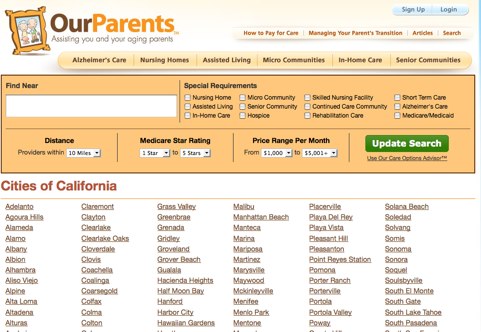 OurParents includes a tool called the Care Options Advisor, that lets a person describe the circumstances about a senior citizen (health, age, priorities, etc.) in an entry form and be guided to the type of care options that make the most sense to consider. Once users pick a provider that they are interested in, OurParents will contact the care provider for the user. OurParents currently doesn’t advertise on the site but plans to make money from paid services the site plans to offer users in the future, including insurance and health related products. Enurgi, which was acquired by health care provider Univita earlier this year, provides a similar service, but Enurgi is targeted toward connecting the elderly with home caregivers, a small segment of the elderly care population. And Energi took a cut of transactions that took place via its site. Because it’s completely free, OurParents is sure to be a popular destination for adults looking to find unbiased and detailed information on care for elderly loved ones.  Crunch Network: CrunchBase the free database of technology companies, people, and investors |
| Feel The DailyBurn: Gyminee Gets A New Name, Raises $525K Posted: 26 May 2009 02:59 PM PDT
Gyminee first launched in late 2007, coming out of beta in January 2008 (the company had launched before it joined the TechStars program). Since then it has grown to 125,000 members, and while the site has to deal with some users dropping off as they get lazy and stop exercising, it reports that active users have managed to shed an average of 6.2 pounds of fat, or gain 5.75 pounds of muscle, depending on their goal. The overall purpose of the site is to help you lose weight and gain muscle by tracking every aspect of the food you consume and your workouts, all presented in a very attractive interface. The site offers a database of thousands of foods, allowing you to quickly figure out how many calories you’ve eaten throughout the day. You can input stats from your daily exercise regime (number of miles run, bench-press weight, etc.), so you can track your progress over time on slick graphs. The site’s social features allow users to share exercise plans and try to motivate each other. DailyBurn generates revenue by offering a set of premium features, which include a meal planner, more nutrition stats, and exercise plans created by fitness professionals, as opposed to other users. CEO Andy Smith says that the premium plan has been seeing a high conversion rate, which helped make the company appealing to investors. The company will soon be releasing a native iPhone application that will allow you to update your workout profile on the go, and will also be opening up its API to third parties. Other fitness startups include Fitbit, ZodBod, and watchMEmelt.
Crunch Network: CrunchBoard because it’s time for you to find a new Job2.0 |
| Political Pundit Tucker Carlson To Launch Competitor To Huffington Post Posted: 26 May 2009 02:47 PM PDT
Conservative political pundit Tucker Carlson is planning to launch a political news competitor to the Huffington Post, reports The Hill today. The site will be called TheDailyCaller.com and will be focused on reporting news about the Obama Administration but will add “facts to the conversation.” Implying that the Huffington Post’s coverage is biased, Carlson said that The DailyCaller will be dedicated to “telling the truth and be accurate.” The site’s reporters will share in the profits of the news site based on how much traffic reporters get for their stories. According to Carlson the site’s motto is “every seven minutes,” and will be speedier than its competitors, including HuffPo and The Drudge Report. Carlson, an MSNBC campaign correspondent who is famous for his conservative spin and love for bowties, denies that the site will be a forum to discuss the future of the Republican party. Regardless of the spin, political news sites are aplenty and Carlson’s site will face stiff competition from HuffPo, the Politico and AOL’s new politics site, Politics Daily. Fellow MSNBC reporter Carlos Watson recently launched The Stimulist, which is focused on reporting long-form news for the Obama generation. Crunch Network: CrunchBase the free database of technology companies, people, and investors |
| It May Not Be Making A TV Show, But Twitter Sure Has A Lot Of Reruns Posted: 26 May 2009 01:50 PM PDT
Here’s what the latest says: Twitter is not making a TV show. Instead, some “Hollywood folks” are, but Twitter has “little to do with their efforts but we wish them success,” Twitter co-founder Biz Stone clarifies. Of course, this is exactly what he said yesterday, as I outlined, but he said it in a very indirect way. So now we get a second post. The problem is that a massive number of Twitter users are still tweeting out that Twitter is basically developing its own show. The power of the retweet is keeping this story going. And now even CNN is covering super-celeb-user Ashton Kutcher threatening to boycott if they go through with it. So let’s be clear once again: What Twitter is doing: Lending its support and probably branding to at least one television show produced by Reveille and Brillstein. Others are in the works as well. What Twitter is not doing: Making its own show, starring anyone from Twitter, or really distracting it from anything else it’s working on. Why this matters: First and foremost, this is a business deal. And Twitter will make money from this — though it doesn’t state that. Long term though, Twitter thinks its platform can be leveraged beyond web applications, and can be the backbone of entertainment experiences, among other things. Basically, Twitter is thinking of itself as a new communication medium (which has been noted several times in the past) and a TV show totally built around Twitter is an interesting step in proving/disproving that with the mainstream public. That is all. At least until the inevitable post tomorrow further clarifying the situation. Crunch Network: CrunchBoard because it’s time for you to find a new Job2.0 |
| The Awesome Potential Of Retweet Posted: 26 May 2009 12:26 PM PDT
Editor’s note: This is a guest post by David Sacks, the Founder and CEO of Yammer and Geni. Previously he was the COO of PayPal and produced the Academy Award-nominated movie "Thank You For Smoking." Sacks says he’s incorporating the retweet feature into Yammer, his “Twitter for the enterprise” product that launched at TechCrunch50 last year. Sacks’ Twitter username is @DavidSacks While there are many new features that Twitter could launch, the most powerful are likely to be based on behaviors that users have invented themselves. That's exactly what happened with @replies. Users started addressing each other by their @usernames. Twitter noticed and officially supported the feature. As a result, Twitter is on its way to becoming the discussion board for the web. There is one other user convention with that kind of potential: Retweet. A retweet occurs when a user reposts an interesting tweet. As with @replies, users established the notation organically: you type 'RT' followed by the @username of the original author and then the message.
The problem is friction. You have to copy & paste the message and then the author's username. Frequently you have to edit the original message because the extra meta-data pushes it over 140 characters. Because of the accumulation of meta-data, retweets are even harder to retweet. This means that interesting messages don't spread more than a generation or two. Retweet support built into clients like Tweetdeck is only a partial solution. It eliminates the need to copy & paste messages but not to edit the original. Twitter should officially support this feature by adding a 'RT' option to messages. Clicking this button would repost the original message in your followers' feeds. The reposted message would appear just as you saw it (except for a tagline showing who retweeted it), and could itself be retweeted. (See my 'Before' and 'After' screenshot.) The ability to retweet retweets is critical because it means that messages could spread throughout the twittersphere frictionlessly. I believe this would make Twitter the leading way that memes spread in our culture. Twitter could accelerate this phenomenon by surfacing analytics about the most retweeted messages, allowing users to see the ideas (and links) that are spreading fastest throughout the world or in their local networks. One other suggestion: A follow button appearing under the original author's avatar in a retweet would make it easy to follow that person. Thus retweet would ensure widespread distribution not just of interesting content but also of interesting people. This would help level the "celebrity" bias on Twitter, allowing regular people to quickly build a following by posting interesting messages. In the absence of such a feature, many people conclude that it's too hard to get discovered if you're not a celebrity. Like search and @replies, retweet plays to Twitter's core strengths — discoverability and easy sharing. In the war between sharing platforms, it's hard to see how Facebook could copy this feature, because its privacy settings would prevent the frictionless spread of content. If Twitter becomes the dominant platform for discovering and sharing information when privacy is not important (including most status updates and all links), Facebook might suddenly look like a small subset of the sharing universe, reserved primarily for private news and media sharing. Crunch Network: MobileCrunch Mobile Gadgets and Applications, Delivered Daily. |
| Microsoft’s Bing Logo Leaked By Way Of Favicon? Posted: 26 May 2009 11:46 AM PDT
While it appears that Microsoft may have already taken it down, I visited bing.com in my browser about 10 minutes ago and sure enough saw the favicon you see above. It’s a lowercase “b” with a yellow/orange dot in the middle. It would appear that this will be at least a part of the Bing logo. The light blue and yellow/orange color combination matches that of Kumo. I find that combination to be quite ugly — sort of like the Cleveland Cavaliers basketball uniforms (below) from the 1990s — but hey, that’s just personal taste. All that really matters is now the search engine actually performs. This favicon, which again, may only be a part of the logo, also looks a lot like the logo for Blinkx, the video search engine. That features a red lowercase “b” with an eye in the middle. See them side-by-side below. Microsoft is spending some $80 to $100 million on a marketing campaign for Bing, according to Ad Age. That’s huge by any standard, but especially when you consider that Google only spent $25 million on all of its marketing last year. I don’t know what Microsoft plans to spend all that money on, but I get the sneaking suspicion that Bing Crosby will be involved in some way or another.
[thanks DD] Crunch Network: CrunchBoard because it’s time for you to find a new Job2.0 |
| Now You Can Avoid Euro Disney In Google Earth, Just Like You Did In Real Earth Posted: 26 May 2009 11:13 AM PDT
Just as it did last year with Disney World, Google Earth now has Disneyland Paris (as it was rebranded to in 1995 following its thud of an opening) rendered in 3D. Disney has provided the program with some 85,000 photos — a huge 450GB worth — to make the renderings as realistic as possible. All the rides are there, the castle and even over 500 landscape elements. Following its rebranding, and the opening of some new rides, Disneyland Paris was able to somewhat turn things around, but it remains far in debt. Having a virtual representation of your theme park in Google Earth isn’t going to help that. Is it going to convince more people to go visit the park? Unlikely. But it’s a cute distraction for me for about 15 minutes. And it shows how good some of these 3D renderings are getting. The Disneyland Paris layer can be found in the “Gallery” folder of Google Earth 5.0.
Crunch Network: CrunchBoard because it’s time for you to find a new Job2.0 |
| Taking Yahoo Meme For A Spin: It’s A Mediocre Tumblr Clone Posted: 26 May 2009 11:08 AM PDT
It’s all about micro-sharing, sure, but that’s just about where the comparison ends. Yahoo Meme is much more like micro-blogging service Tumblr than anything else, and it’s a mediocre clone at that. Here’s how it works: you create an account with your preferred username (Yahoo profile required), and you basically start off with an empty blog that you can fill with text, images, videos, music or a mixture of those media. All you can add to your blog - apart from the content - is a title, a 100-character description and an avatar. You can visit my account here. There are no other settings for customizing your Meme blog, at least for now, and so far there is no way for people to create a comment thread underneath the content you post nor for you to share your posts other than a dedicated URL that points back to the update. You can search other people’s public accounts and follow them - which is essentially the same as subscribing to a blog’s RSS feed - and once you do this the updates from these users will also appear in your own stream. It’s similar to Tumblr in the sense that there’s a ‘Repost’ button (see second screenshot) that works exactly the same way as the ‘Reblog’ feature that’s baked into Tumblr. That said, Tumblr gives you way more customization options, lets you update your blog in a variety of ways, offers basic analytics and comes with an API. Yahoo Meme has none of that for now. It’s unclear whether Yahoo is merely bucket testing this new service in one language only (although it is one that is spoken by more than 200 million people) and planning a more extensive roll-out in the long run, or if this is as far as it goes. We’re also not sure if there are more features on the way, or if it will continue to be as rudimentary as its current incarnation. Either way, it needs a lot of work before it can appeal to a wider audience than some early testers. (Thanks to Carlos Duarte for the tip)
Crunch Network: MobileCrunch Mobile Gadgets and Applications, Delivered Daily. |
| Live Blogging The Facebook Conference Call Posted: 26 May 2009 09:56 AM PDT
Mark Zuckerberg: Advertising products performing strongly. Now have tens of thousands of advertisers. On track to create a nice self sustaining business. Lots of firms have approached us. DST approached us with an investment background demonstrating advanced background in the power of social networks. Getting this money gives us a cash cushion. Not going to talk about how it’s going to be used, but nice to have the flexibility. Yuri Milner (DST Chief Executive): Q: How does this affect Facebook’s approach with regard to an IPO. Q: About Facebook valuation with common stock. Question about the Microsoft valuation Q: How are you going to monetize international audience? Q: Idea about projected advertising revenues going forward? What do you see your role as? Q: Can you talk about why Facebook is not interested in larger brand ads? Q: Quick question about the preference shares you’re issuing to DST. How similar are these to the ones Microsoft got in 2007? Q: I was wondering if the $10 billion valuation includes any debt, and if the company carries any debt at all. Q: To be clear on this valuation. The $10 billion doesn’t refer to common stock. So how should we think of the valuation of Facebook itself. Q: How many other suitors did you have? Did you line them up and pick from the highest bidder? Q: Is this the largest foreign investment in Facebook? Q: There was buzz about Facebook working on a video chat feature, does this investment give you a little breathing room to focus on that kind of feature. Crunch Network: CrunchBoard because it’s time for you to find a new Job2.0 |
| You are subscribed to email updates from TechCrunch To stop receiving these emails, you may unsubscribe now. | Email delivery powered by Google |
| Inbox too full? | |
| If you prefer to unsubscribe via postal mail, write to: TechCrunch, c/o Google, 20 W Kinzie, Chicago IL USA 60610 | |


 Semantic ad technology provider
Semantic ad technology provider 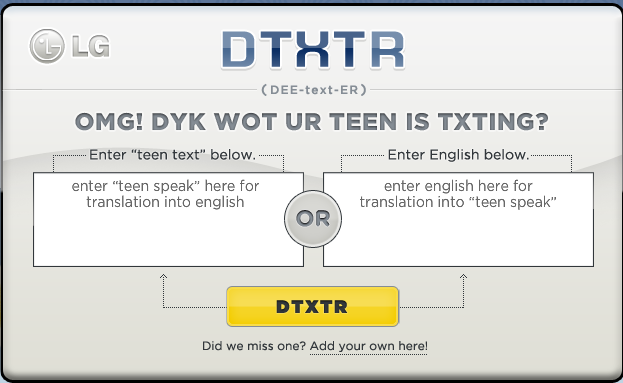

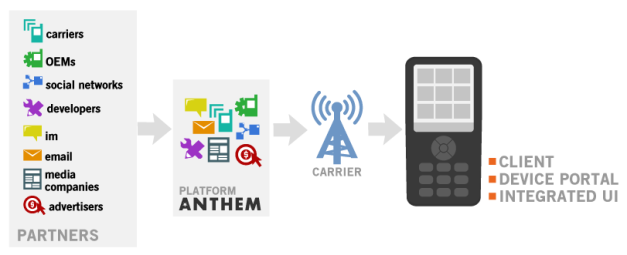
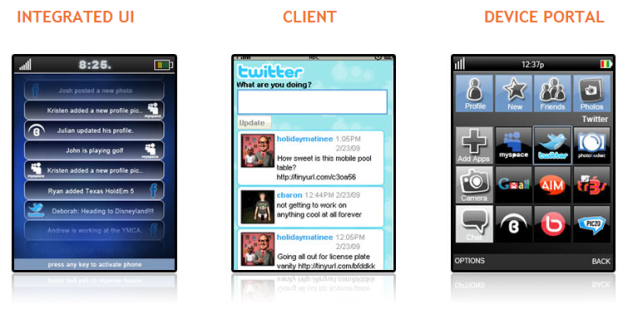
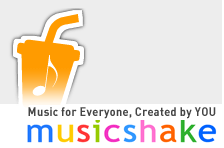 Here’s a fun tool to keep you busy while procrastinating:
Here’s a fun tool to keep you busy while procrastinating:  The TechCrunch Europe
The TechCrunch Europe  Last month Time Warner
Last month Time Warner 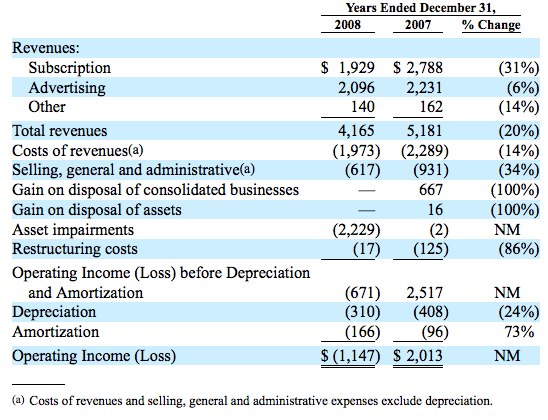
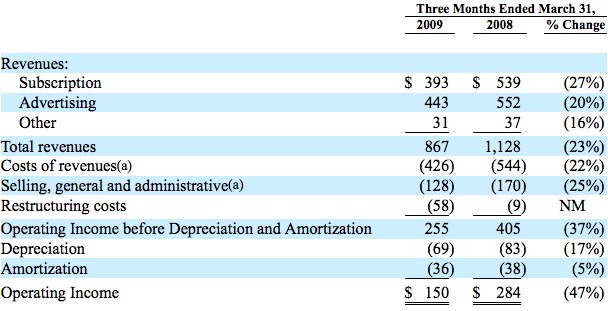


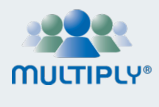
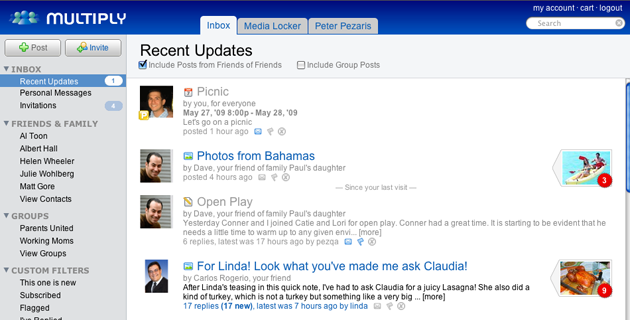
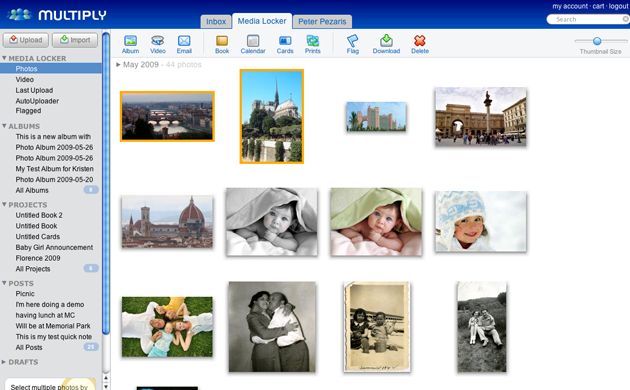
 New search engine
New search engine 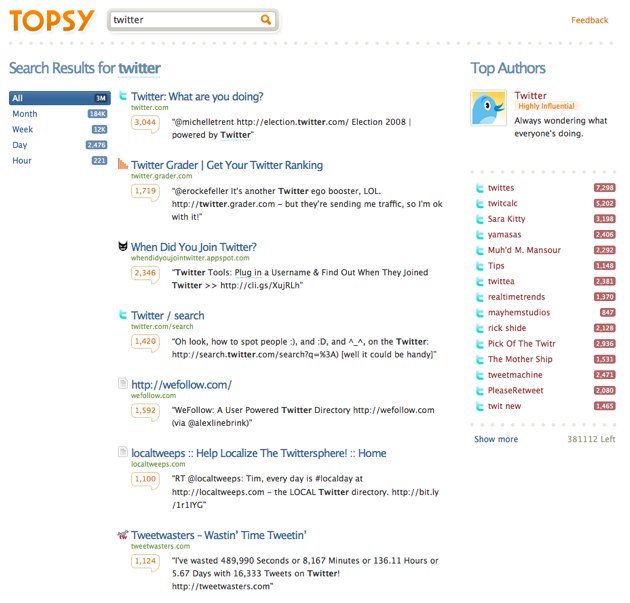
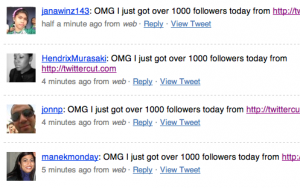 Everyone wants more Twitter followers. It’s kind of the name of the game. But if you see some tweets in your stream that proclaim: “OMG I just got over 1000 followers today from http://twittercut.com” — don’t be fooled, it’s a scam. The link takes you to a site that requests your Twitter login and pass. It then sends out this tweet to all your followers — a typical worm.
Everyone wants more Twitter followers. It’s kind of the name of the game. But if you see some tweets in your stream that proclaim: “OMG I just got over 1000 followers today from http://twittercut.com” — don’t be fooled, it’s a scam. The link takes you to a site that requests your Twitter login and pass. It then sends out this tweet to all your followers — a typical worm. I’m a big fan of coming up with
I’m a big fan of coming up with  A few weeks ago,
A few weeks ago, 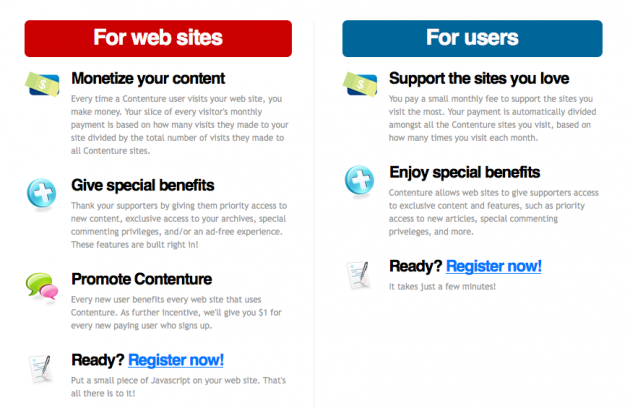


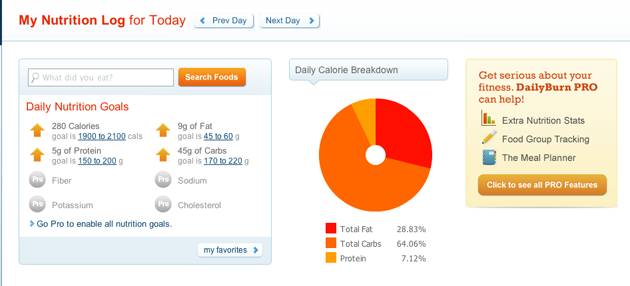

 For a service that is all about concise messaging, it’s humorous how the manner in which Twitter writes its blog posts is anything but. For the second time in as many days, we have
For a service that is all about concise messaging, it’s humorous how the manner in which Twitter writes its blog posts is anything but. For the second time in as many days, we have 
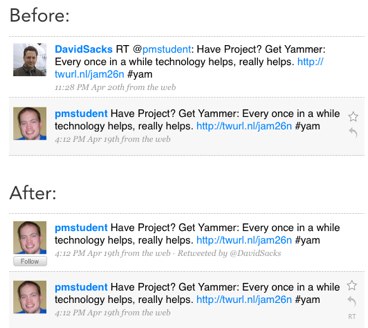
 Within the next few days, Microsoft is expected to unveil its latest attempt at trying to be a player in the world of web search. After it has failed to get live.com any traction against Google, it will apparently launch a new engine called “Bing” — the project formerly known by its
Within the next few days, Microsoft is expected to unveil its latest attempt at trying to be a player in the world of web search. After it has failed to get live.com any traction against Google, it will apparently launch a new engine called “Bing” — the project formerly known by its 

 In 1992, Disney decided to build upon the huge success of its Disneyland and Disney World theme parks by opening Euro Disney in a suburb of Paris. The company had previously licensed its name for a resort abroad just outside Tokyo, but the European version was a more ambitious project being handled by the company. It started out as a nightmare. Simply put, people didn’t go to it. And now you can avoid going to it from the comfort of your own home thanks to the magic of Google Earth.
In 1992, Disney decided to build upon the huge success of its Disneyland and Disney World theme parks by opening Euro Disney in a suburb of Paris. The company had previously licensed its name for a resort abroad just outside Tokyo, but the European version was a more ambitious project being handled by the company. It started out as a nightmare. Simply put, people didn’t go to it. And now you can avoid going to it from the comfort of your own home thanks to the magic of Google Earth.
 We recently broke the story about
We recently broke the story about 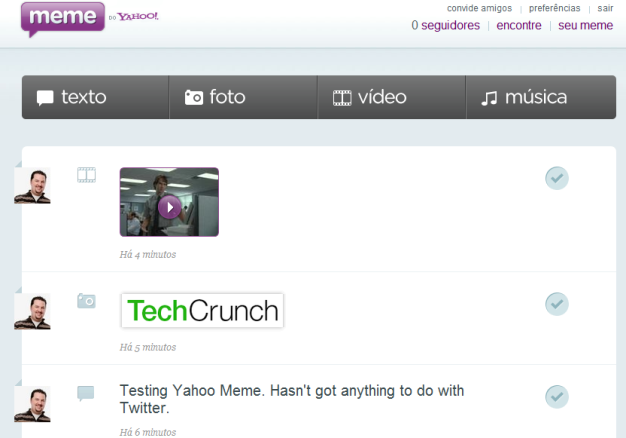
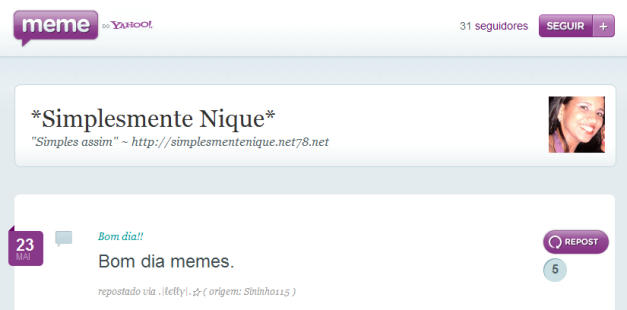
 This morning Facebook
This morning Facebook
No comments:
Post a Comment